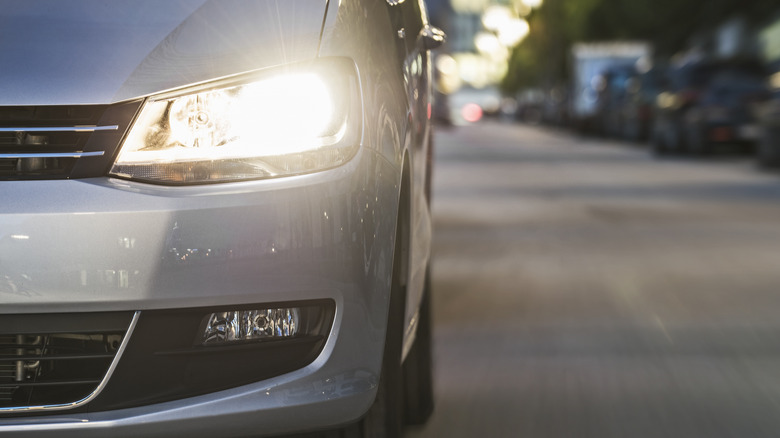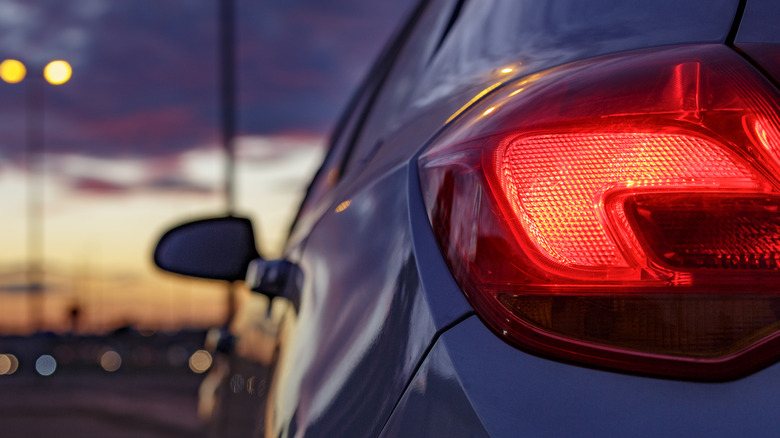Is It Legal To Tint Your Car's Headlights And Tail Lights? What The Laws Say
There's a good chance that at some point in your life you've seen a car driving around with dark window tints, though with so many U.S. states cracking down on the practice they may become more of a rarity. But what about tinted headlights or tail lights?
While window tinting is more common (and really it's just the extremely dark varieties that are being banned), it's not unheard of for owners to apply a similar film to their car's lights for the sake of aesthetics. The practice might cut down on the issue of modern headlight brightness — excessive brightness, really — but that probably wouldn't fly during a traffic stop. Reason being that the purpose of headlights is to both properly illuminate the road ahead and make it easier for oncoming cars to see you, while tail lights are there so anyone behind you also knows you're there. Tinting either or both sets of lights too much can create potentially dangerous conditions for everyone.
It's legal to tint windows (with different levels of darkness permitted in different states), so it should be legal to do the same with head- and tail lights, right? The legalities of tinting a car's lights are a bit murky. Ultimately it comes down to where you live and whether or not you're going to be driving on public roads.
Sometimes it's okay, sometimes it's not
Light tinting is addressed at the state level, and as such we highly recommend (seriously, do not underestimate the importance here) that you look up your state's laws regarding this kind of tinting. Cars that are just going to sit in a showroom or drive off road aren't as much of a legal concern, but it's still worth looking up local laws just in case. And if you do end up tinting your lights, don't use ammonia-based cleaners — it's a big mistake to avoid when cleaning your car, and it risks damaging the tinted surface.
It may take some effort to find details on light tinting laws in your area, but try checking with the Department of Transportation, DMV, your state's official website, or even sites for local police precincts. Neighboring states are also worth looking into, because even if light tinting is okay in your state, the same rules may not apply when you cross into another. "It's okay back at home" isn't enough of an excuse to get out of a possible fine.
Broadly, states that consider this kind of tinting unlawful include California, Florida, Illinois, Michigan, New Hampshire, New York, Pennsylvania, Texas, Vermont, and Washington DC. It's not strictly considered illegal in Alabama, Alaska, Hawaii, Kansas, Iowa, Louisiana, Minnesota, North Dakota, Ohio, Pennsylvania, Virginia, Wisconsin, or Utah, but the level of visual light transmission (VLT) is extremely important. The number varies a bit from state to state but 70 percent (as in, 70 percent of the light can still make it through the tinted surface) is relatively common.

